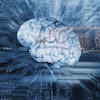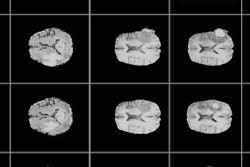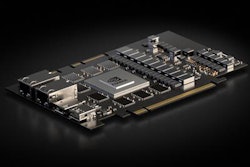
While artificial intelligence (AI) is poised to reshape radiology, older imaging systems may be left behind, unable to handle the massive computational workload required to run AI algorithms. But graphics processing unit (GPU) developer Nvidia hopes to solve this problem with its Clara virtual supercomputing platform.
An initiative announced at the company's recent GPU Technology Conference (GTC 2018), Clara employs virtualization to deliver supercomputing power to legacy imaging equipment in the field. When it's commercially available, Clara would enable healthcare institutions to benefit from even the most computationally intensive AI and image processing technologies.
Clara would essentially eliminate all barriers to the adoption of AI algorithms, and it can scale up to accommodate the increasing workload that will be required to run AI algorithms for medical imaging over the coming years, said Kimberly Powell, vice president of healthcare for Nvidia.
GPU computing
Nvidia is hardly a new player in medical imaging. The company has participated in the field for about 10 years with its GPU computing technology, which is designed to offload computing-intensive portions of applications from a computer's central processing unit (CPU) to the GPU and speed up performance, according to the firm.
 Kimberly Powell from Nvidia.
Kimberly Powell from Nvidia.Within radiology, Nvidia's technology has been used to power advanced visualization software and sophisticated image reconstruction techniques. For example, it has been used in CT to support iterative reconstruction algorithms for minimizing radiation dose, as well as in MRI to speed up acquisition times while maintaining image quality, Powell said.
In addition to its utility in image acquisition, GPU technology has been used to support image interpretation with applications such as real-time image registration and image filtering, she said.
Computer horsepower has become so important that new modality scanners are being launched with GPU chips built-in, such as the Logiq E10 ultrasound scanner, which GE Healthcare launched at last month's European Congress of Radiology with Nvidia GPUs inside.
But what about the massive installed base of imaging scanners that can't be updated with GPU or supercomputer technology? Will these systems ever be able to participate in the AI revolution?
Yes, thanks to Clara, which Nvidia described as a virtual GPU environment.
"That virtualization piece is what's at the heart of Clara, to imagine being able to take these [medical imaging] workloads and put them into a virtual supercomputer," Powell said. "Clara is a virtual supercomputer for medical imaging."
Modality agnostic
Imaging sites that have access to Clara would send data from their modality scanners to the Clara supercomputer, which would process the data using AI algorithms that are clinically relevant to the task at hand. The AI's output would then be sent back to the Clara customer to assist with reading the case. Clara can be on-site in the data center and also utilized in the cloud, according to the company.
Clara could be used by all imaging modalities, Powell said. She noted that some modalities -- such as ultrasound -- have more demanding computational workloads that need to be performed in real-time. The company is confident, though, that it will benefit from its experience in developing technology for virtualizing the highly interactive gaming field.
"Our intuition tells us that we can do it even for real-time workloads such as ultrasound," she said.
The specific clinical applications used on Clara will be determined by development partners, such as large imaging vendors and promising start-ups that are developing AI algorithms, Powell said. Academic institutions will also likely contribute applications that will run on Clara.
Current status
As Clara was just announced at GTC 2018, Nvidia hasn't announced any specific partners for the platform and also hasn't finalized a business model. It does plan, though, to bring Clara to market with its imaging vendor partners, Powell said. The firm also aims to build momentum for Clara in the run-up to the 2018 RSNA meeting in Chicago.
"I believe [at RSNA 2018] that we'll have much more of a representation of the architecture as well as real workloads running [on the platform]," she said.
At GTC 2018, Nvidia showed that one of its supercomputers could virtually reconstruct CT images from raw data, pass it to an image processing algorithm, and remotely visualize and manipulate the reconstruction in real-time. In addition, the company also demonstrated a deep learning-based volumetric segmentation method as well as cinematic rendering.
"The nuts and bolts are kind of there," Powell said. "Now we want to bring some real workflows to it with development partners and their applications, and I think we'll see that at RSNA."
The company plans to make Clara available worldwide at launch, Powell said. Nvidia is investigating whether it will need to seek U.S. Food and Drug Administration (FDA) clearance for the platform.
"We'll see how it goes, but we believe the end applications are going to be from the healthcare ecosystem who are getting these FDA-approved," she said. "But we're keeping an eye on it, and I think these are things that we need to determine as we go."




















